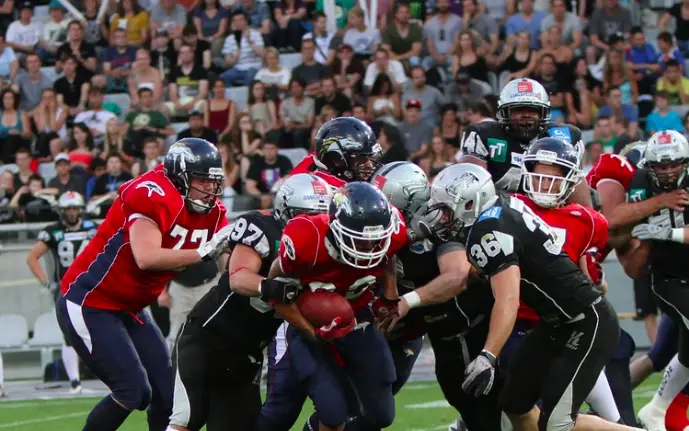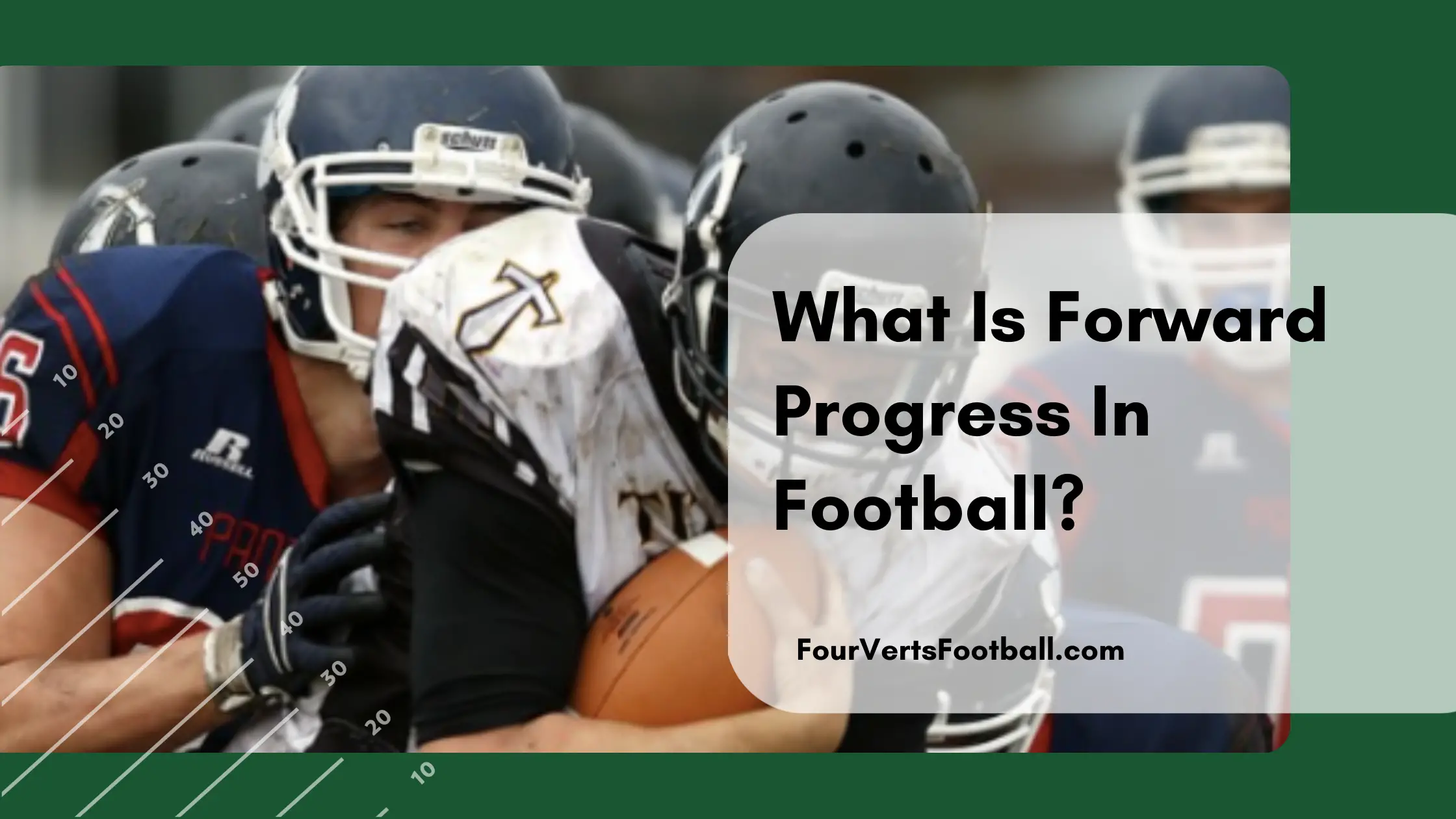Forward progress in football refers to the furthest most point the ball carrier travels before his forward momentum is stopped by a defender.
Forward progress is a call that the referee will make on the field to declare the play dead or to spot the location of the ball.
In most instances, this play occurs when a player is wrapped up by one or multiple defenders.
It is important to know that forward progress is a subjective call by the referee. It is not called every time a play is no longer travelling towards the goal line.
The call of forward progression is used on plays in which it is clear that the ball carrier is no longer going to advance the ball or has been tackled behind his furthest point of progression.
If a player is simply hit towards his own goal line yet stays on his feet the play will not be blown dead due to forward progress.
But if a player is pushed back three or four yards while wrapped up by a defender then forward progress would cause the ref to call the play dead.
The official NFL rulebook states this as the rule of forward progress.
“The Forward Progress of a runner or airborne receiver is the point at which his advance toward his opponent’s goal ends and is the spot at which the ball is declared dead by rule, irrespective of the runner or receiver being pushed or carried backwards by an opponent.”
What Is the Purpose Of This Rule?
There are two main purposes to the forward progress rule in football. The first being the safety of the players. And the second is finding the furthest point the ball advanced on the play.
The purpose behind this rule is to provide safety to the players. If forward progress was not a rule then all ball carriers would have to be brought out of bounds or tackled to the ground.
This means if you wrap up a quarterback in the pocket you would likely have to throw him to the ground to get the sack. In many cases, a defender can clearly have the quarterback in his grasp. These quarterbacks often have no real chance of getting away.
In these cases, it is helpful to have forward progress to establish where the ball carrier is. That is without having to tackle him to the ground.
The other reason the forward progress rule is in place is for plays in which a player is tackled at a point behind his forward progression.
In other words, sometimes a player reaches a point on the field but is tackled behind it. This occurs when they are carried or pushed backwards before falling to the ground.
Due to forward progression, this player will be marked at the furthest point on the field they reached. Without forward progression, this player would be marked down where he fell. This would then incentivize the defense to carry offensive players backwards.
Since this would negatively affect the gameplay this rule was put into place.
Can Forward Progress Be Reviewed?
Since forward progression calls in the NFL are subjective they cannot be reviewed. They are one of the few calls by officials in the NFL that cannot be reviewed.
Essentially it is up to the ref’s opinion whether forward progress is called. This means a ref is attempting to protect a players safety by calling them down by forward progress. Similar to a ref calling a boxing match this isn’t really something that can be overturned.
A call of this type is not black and white like an ineligible receiver. This call requires the ref’s subjective opinion.
If the ref makes a split-second decision to call the play down then there is no reviewing this play or the spot of the ball.

What Plays Tend To Involve Forward Progress
In most plays in football the player with the football is going to be downed at the furthest point he progressed on the field. But on some occasions this isn’t going to be the case, this is where forward progress comes in.
Below we are going to go through a few common plays that result in the forward progress rule coming into play.
Quarterback Sacks
One play in which this call is often made is during a quarterback sack. Oftentimes when a quarterback is sacked he is not taken to the ground but rather surrounded by the defensive line.
In situations like this, the officials will blow the play dead in order to keep the quarterback safe.
Since defensive linemen are much bigger than most quarterbacks these players are easily able to move the quarterback backwards once they have him wrapped up.
When forward progress is called they will spot the ball at the location it occupied when the whistle was blown. This way the quarterback will not lose more yards due to being carried backwards by the defense.
Comeback Routes
Another situation in which forward progress comes into play is on comeback routes. This is especially true when a team is attempting to gain a first down.
Oftentimes when a player catches a comeback route he will be moving towards the quarterback.
If he is tackled after coming backwards then forward progress will come into play. It is not uncommon for a player to catch a pass past the first down marker only to be tackled behind it.
In these situations, the officials can look to replays to determine the furthest point the ball progressed to. So long as the ball crossed the marker and the carrier didn’t travel backwards on his own volition then a first down will be awarded.
Runs Up The Gut
Another common play that involves this rule is running the ball up the gut. Running up the gut refers to plays in which the ball is handed off and the player is to run into the middle of the formation.
What often happens in these runs in the middle of the field is a pile of players pushing their opponents towards the goal line.
The runningback will often be carried several yards backwards towards the end of the play. So long as the offense is winning this pushing of the pile the play will go on.
But if the defenders start to push the pile backwards forward progress will be called and the ball will be marked down.
That is all on forward progress read up on illegal forward passes or if you can fumble forward in football.

